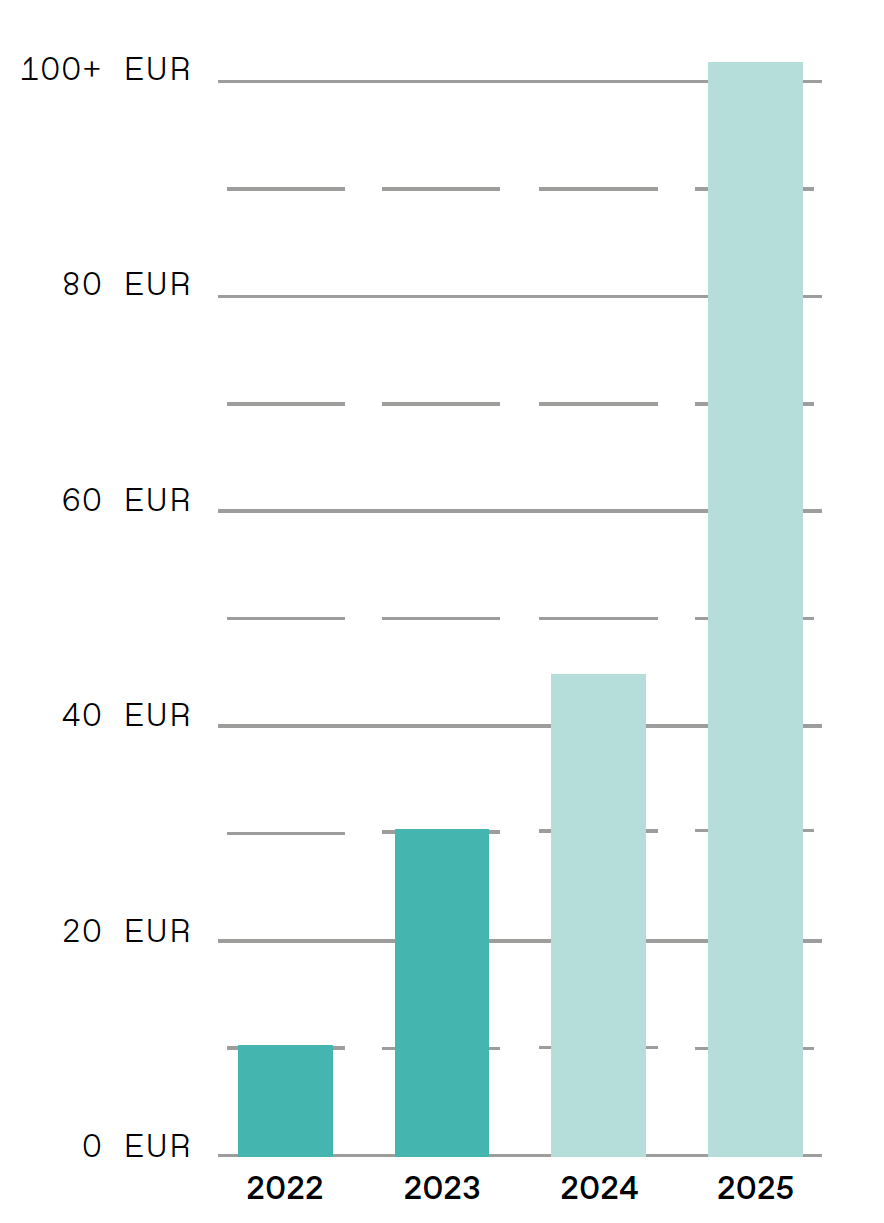
5 minute read
Companies’ carbon footprint is particularly important in Europe
from MTX GROUP MAGAZINE 2023 eng
by MTX Group
The commodity trade has been quite busy of late. Recent years have brought dramatic changes to the market and, above all, price increases. Commodity prices are now mostly falling, but a new challenge is emerging in the form of their carbon footprint and of the products made from them. METALIMEX, MTX Group’s commodity trader, is adapting to this new reality.
The “green surcharge” for a ton of low-carbon aluminum 100+

Each of the past couple of years was completely different. METALIMEX, which trades commodities for MTX Group and then sells its products, had to deal with a highly turbulent market full of unknowns. 2023 is no exception and will surely keep METALIMEX very busy. Its Chief Commercial Officer, Daniel Trnka, says that new challenges are on the horizon.
How does this year compare to previous ones?
In general, end-user and consumer demand is cooling. The boom after the first wave of Covid in 2020 has been steadily declining since 2022. Increased interest rates and overall uncertainty in the market mean that end customers are not as eager to spend. As a result of this lower demand, commodity prices are falling to a new low. Even energy prices that were extremely high just a short while ago are now falling, albeit remaining above average. This works in our favor in terms of purchasing input materials, but at the same time we must try to maintain margins even in the face of reduced trading volume. Environmental and social responsibility are different challenges altogether.
How does ESG affect your business?
Very significantly, and its importance will grow. In our business, ESG is a matter of sustainability, particularly our carbon footprint. And that’s simply because other aspects such as ethical and socially responsible trading, anti-discrimination, and other facets of ESG have been a matter of course for us for many years. Moreover, MTX Group is continuing to reduce the carbon footprint of its products over the long term as it goes hand in hand with lowering energy consumption, increasing production efficiency, reducing waste, and improving waste management, including recycling. But today, the pressure in this area is enormous, and it is practically certain that the pressure to reduce our carbon footprint will drive a rise in commodity prices.
Why is that?
Materials with a small carbon footprint will simply be subject to various “green” surcharges because of high demand and limited supply. Some customers’ requirements are unrealistic. I will give you an example: Customers see that a producer can make one ton of aluminum with a carbon footprint below 4 tons of CO2 per ton of metal from aluminum electrolysis, anode production, or aluminum casting, which is the current threshold for “green” aluminum. They then make it their goal to buy products made of this type of aluminum. However, only a very limited amount of this kind of aluminum can be produced using geothermal or other renewable energy sources. Certainly not enough to satisfy the entire European market. But the demand is already here and anyone who can make “green” aluminum will set their prices accordingly. At the beginning of this year, this green premium was 10 USD per ton of aluminum. Now it is 30 USD, next year it will probably start at 45 USD, and for 2025, I have already seen forecasts of multiples of these values.
How can you adapt to this?
As a trader, we need to look for suitable sources of commodities and enter into strategic partnerships. The companies in the group have more options. We put a great degree of faith in renewable sources and particularly in recycling. For example, recycled aluminum has negligible carbon footprint and MTX Group wants to be a global leader in its usage. We are looking for suppliers who are close to us geographically, not only because the logistics are easier, but also because of the impact on our carbon footprint. Importing input materials from China, for example, is just not worth it in this respect. On the other hand, it is not possible to exclusively buy raw materials locally because they are not mined and produced in Europe. Personally, I see great potential in trading commodities with a smaller carbon footprint. But at the same time, I think that if we don’t want to overheat the market, customer requirements need to become more realistic. We can support them in this and help explain how carbon footprints work. It also helps us a little as we don’t want to disqualify ourselves from global trade with these requirements.
Do customers all over the world have these requirements?
We trade globally, not just in the Czech Republic or Europe, and we can clearly see that carbon footprints are mostly being discussed in Europe. Emission allowances, green certificates for electricity and other carbon taxes and tariffs, some of which are not approved yet, increase the economic demands of production in Europe only. This may reduce the competitiveness of European businesses on the global market.

METALIMEX
A company focused mainly on commodity trading. It is one of the leading traders in Central Europe. 2022










